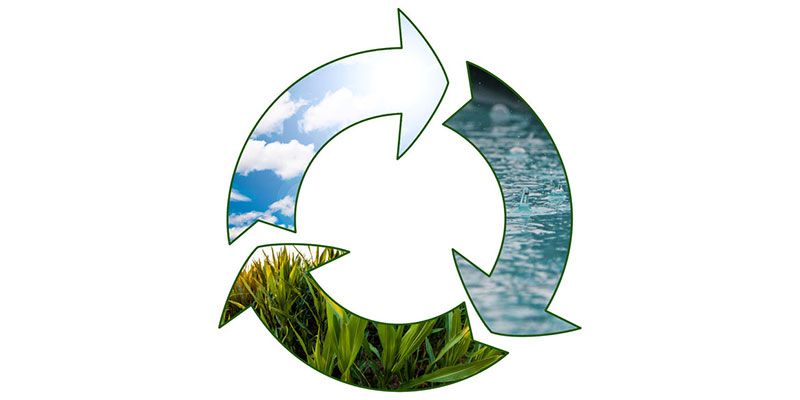Sustainability is an important concept in projections of future water treatment. This includes water reuse, resource recovery, decentralization, and other strategies that are available today.
Various visions share common characteristics, and many of them are available here and now
When it comes to envisioning the “water utility of the future,” there’s no shortage of programs that are showing the way by sharing innovation, best practices, and cost-efficient ways for utilities to adopt futuristic visions. Some of the common themes include:
- Reuse and resource recovery
- Digital technology
- Decentralized and distributed services and infrastructure
- Resilience and future-proofing
The Water Environment Federation’s (WEF’s) Utility of the Future Today program recognizes utilities for resource recovery, community management and partnerships, and internal utility culture transformation. The program is administered by WEF, along with the National Association of Clean Water Agencies, the Water Research Foundation, and the WateReuse Association, in consultation with the United States Environmental Protection Agency and Department of Energy.
The World Bank’s Utility of the Future Program helps utilities reach target performance and maturity through international best practices while encouraging innovation, inclusion, resilience, and market orientation with short- and long-term plans.
The World Economic Forum urges “future-proofing” of the developing world to prepare for droughts, floods, climate change, or other uncertainties. It advocates for scalable, portable, and quickly commissioned plants that avoid the prohibitive capital expenses of large centralized infrastructure. Although such decentralized solutions are individually smaller, together they can make a global impact to solve common water-access problems.
A Circular Water Future
The “circular economy” is a phrase that describes an economy that eliminates waste and pollution, recirculates materials, and protects nature. It’s a common theme in many visions of the water utility of the future. For instance, the World Bank lauds utilities that “shift from a linear to a circular economy paradigm that recognizes the energy and nutrient content of wastewater streams.”
The Global Water Forum also envisions the water utility of the future as a utility that does more with less, using fit-for-purpose solutions toward a circular economy while keeping a focus on competent water management and reduction of non-revenue water, water that’s treated but lost due to theft or faulty infrastructure. The forum also envisions transforming waste into an opportunity and resource.
Avoiding the Build-Neglect-Rebuild Cycle
All too frequently, solutions ignore the reality of local conditions. Undercapitalized utilities can fall victim to a costly build-neglect-rebuild cycle, where a lack of preventative maintenance results in large infrastructure debt: as neglected systems deteriorate beyond repair, they must instead be rebuilt. The World Bank cautions that the water utility of the future must find immediate high-quality solutions while adopting realistic sustainability improvements for the long term.
Challenges that add cost include operation and maintenance, staff training and retention, and regulatory issues. All of these can be avoided through the use of public-private partnership contracts that deliver updated infrastructure with no upfront investment.
These financing arrangements, like Fluence’s Water Management Services, can keep long-term operations and maintenance in the hands of water specialists and free local entities from the burdens of initial capital investment, specialized workforce development and retention, and maintenance costs.
Climate Resilience
The EPA emphasizes resilience in an increasingly uncertain climate, citing intensifying drought, storms, flooding, source-water contamination, sea level rise, and general utility preparedness issues.
Infrastructure for aquifer storage and recovery, including percolation basins and injection wells, is high on the EPA’s list of resilience strategies. Diversifying sources with a mix of surface water, groundwater, desalinated water, and recycled water also allows water trading when supplies are short.
Water Treatment of Tomorrow, Today
One way to make the most of water resources, which are growing scarcer as years go by, is by using decentralized treatment infrastructure. Decentralization, which relies on small plants at the point of use, eliminates much of the need for long-distance piping networks, which in turn reduces leaks that lead to non-revenue water.
Decentralized wastewater treatment makes water reuse more viable, helping to contribute to circularity. Packaged plants can treat water on-site so it can be reused locally, avoiding the expense of pumping it away for treatment. Distributing infrastructure, instead of relying on one centralized plant, also adds resiliency if there’s a natural disaster or outage because trouble at one plant doesn’t take out the whole treatment network.
Modular Fluence solutions address these concerns with containerized treatment solutions that are packaged in standard shipping containers for quick delivery and commissioning.
- NIROBOX™ reverse osmosis desalination and water purification units transform seawater, brackish water, and surface water into drinking water.
- Our Aspiral™ wastewater treatment units are cleared for agricultural reuse and other nonpotable uses under strict California Title 22 and China Class 1A reuse standards.
While there are diverse visions of the water utility of the future, the current Fluence catalog addresses many of them, and our Water Management Services program can deliver them with no upfront investment. There’s no longer any reason to build the costly and inefficient infrastructure of the past when you can build the water utility of the future right now. Contact our experts to find out how.

